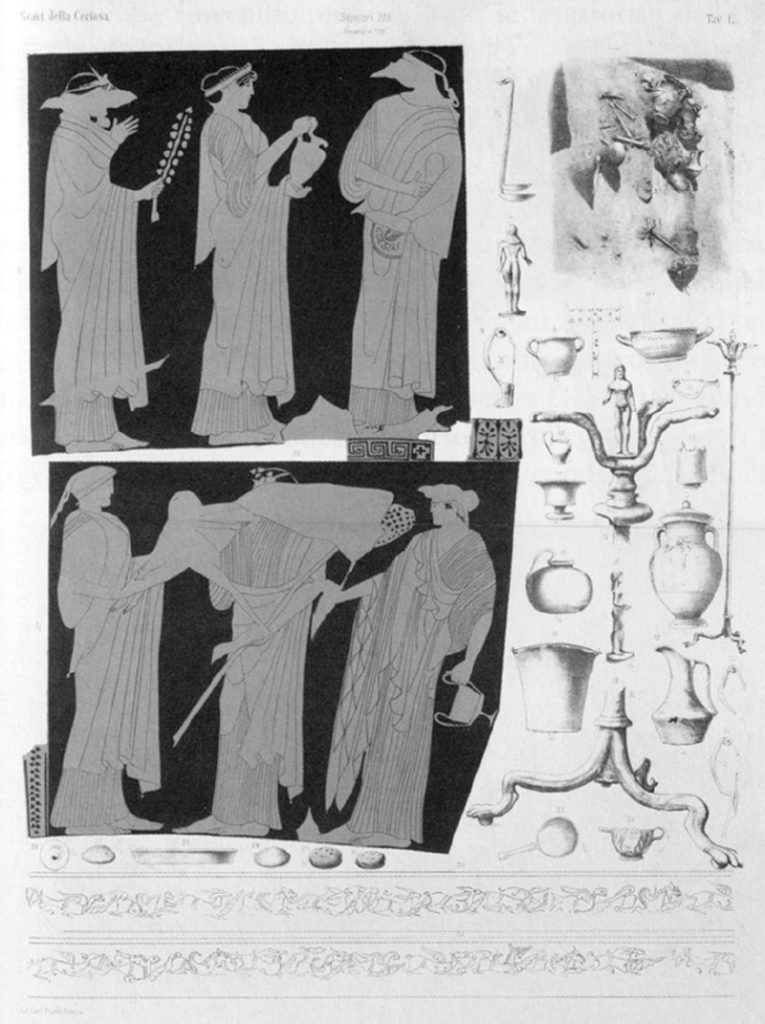IMMAGINI DI ALCUNE DONNE DIONISIACHE IN ETRURIA TRA ICONOGRAFIA E CONTESTI ARCHEOLOGICI
DEM2013138419
Chiara Pizzirani
Abstract
Il contributo presenta un percorso ermeneutico di analisi dell’iconografia di alcune figure femminili dionisiache e dei contesti archeologici da cui queste immagini provengono che trova un contrappunto in alcuni versi delle Baccanti euripidee. L’identità di queste donne oscilla tra quella delle Ninfe di Nisa e quella delle sorelle di Semele, Ino, Autonoe e Agave. Ne emerge con forza l’attenzione riservata dal ceramografo attico e soprattutto dal fruitore etrusco al tema dell’infanzia di Dioniso e in particolare al ruolo di nutrici svolto da questa donne dopo la nascita del dio dalla coscia di Zeus. Il ruolo di queste nutrici, drammaticamente e liturgicamente inteso, doveva essere centrale all’interno del culto dionisiaco, almeno in Etruria dove molte testimonianze archeologiche ne confermano l’importanza soprattutto tra il 470 e il 400 a.C. Una piccola percentuale di defunte in Etruria si identificano con queste donne a livello funerario e ne condividono il destino di divinizzazione, intrinseco alla natura semidivina nel caso delle Ninfe e simboleggiato dall’offerta compiuta sull’altare insieme a Dioniso, testimoniato dal ciclo decorativo del tempio A di Pyrgi nel caso di Ino/Leucotea.
This paper presents an iconographical analysis of some Dionysiac women and the related archaeological contexts. The analysis finds an echo in a few verses of Euripidean Bacchae. The exact identity of these women ranges from that of the Nymphs of Nisa and that of the mythical sisters of Semele (Ino, Autonoe e Agaue). The result is the strong attention, paid by Attic painter and by Etruscan client of Attic vases, to the mythical theme of the infancy of Dionysus and particularly to the role of the nurses, which received the baby after his birth from Zeus’ thigh. Many archaeological documents prove the importance of the dramatic and liturgical role of the nurses in the Dionysiac cult in Etruria between 470 and 400 b.C. Very few of Etruscan women identify with these nurses, as we can observe considering their burial contexts. These women, identified with nurses of Dionysus, share with them a destiny of divinity, as well as divine are the Nymphs. Symbols of the acquired divinity are the scenes of the Nymphs making offerings on an altar together with Dionysus and the decorative cycle of the temple A in Pyrgi with the story of deification of Ino/Leucotea.
 Scarica l’articolo completo:
Scarica l’articolo completo:





















